Crazy Puppies and Silly Geese: Pushing the Limits of A.I. Absurdity
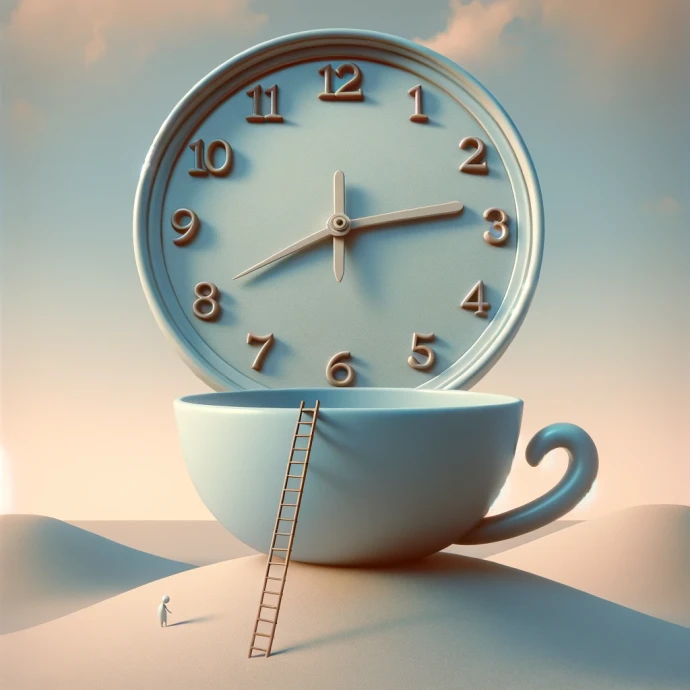
In the ever-evolving realm of artificial intelligence, a recent breakthrough has brought a wave of excitement and wonder. ChatGPT, a chatbot known for its impressive capabilities, underwent an update that expanded its artistic horizons, sparking a creative revolution among its users. This development has led us down a rabbit hole of imaginative possibilities, where the simple question, "What is the craziest dog you can imagine?" transforms into a journey through vivid landscapes and surreal scenes.
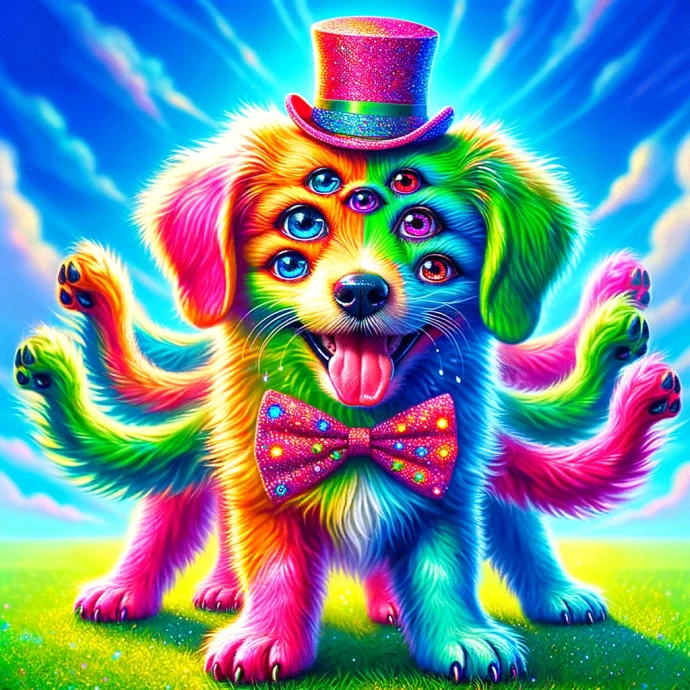
Picture a dog, not just any dog, but one that radiates craziness. Imagine it not just seeing a colourful dog with myriads eyes and paws, but shining with happiness and joy, amidst a backdrop of otherworldly flora. Such scenarios, once confined to the depths of our imagination, are now being brought to life with startling clarity by AI. This new era of digital artistry is marked by a blend of creativity and technology, where the lines between reality and fantasy blur.
Realism of the AI Creations
The uncanny realism of AI-generated images often leaves us both fascinated and unsettled. The ability to create something as bizarre as the Pope in a designer jacket or as endearing as a playful puppy underscores the versatility and power of this technology. The latest update to ChatGPT has made it possible for users to provide more detailed prompts, resulting in images that are both intricate and imaginative.
AI Absurdity Experiment
One notable example of this new capability is the experiment conducted by Garrett Scott McCurrach, CEO of Pipedream Labs. McCurrach challenged the boundaries of AI absurdity with a simple social media post featuring a digital image of a goose. He proposed, "For every 10 likes this gets, I will ask ChatGPT to make this goose a little sillier."
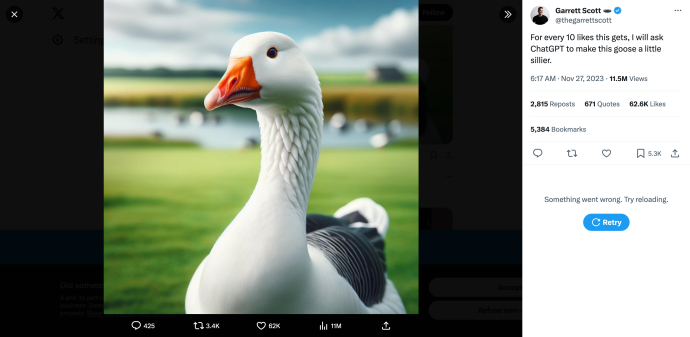
As the likes soared into the tens of thousands, the goose underwent a series of whimsical transformations. What started as a goose with a colourful birthday hat evolved into a surreal creature with extra eyeballs, roller skates, and a backdrop of psychedelic waves and celestial bodies.
This playful experiment highlights a significant shift in how we interact with AI. Unlike previous versions, which required precise instructions, the latest iteration of ChatGPT allows for more abstract inputs, embracing the nuances of human creativity.
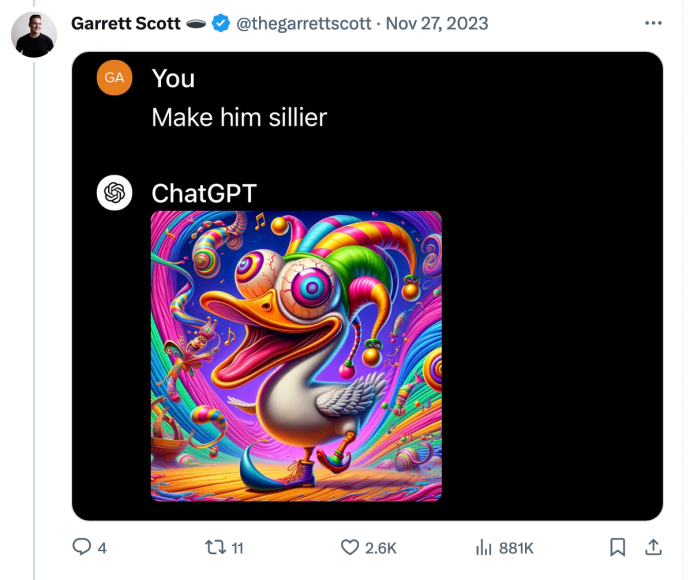
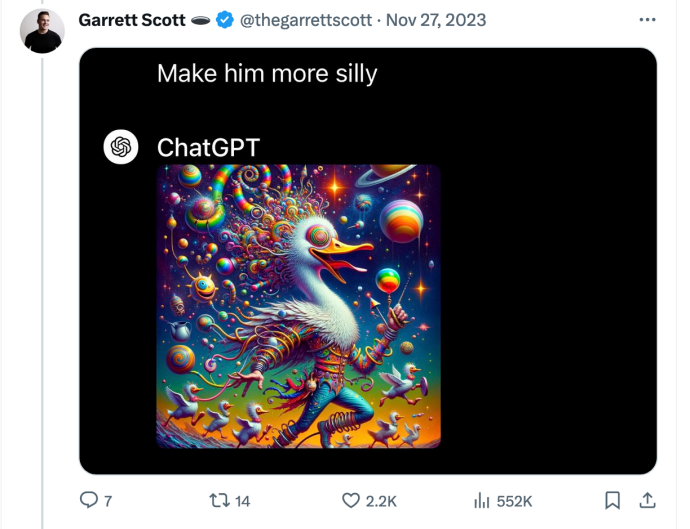
McCurrach's experience demonstrates this beautifully, showing that the AI can take a «vibe» and translate it into a visual masterpiece.
The journey doesn't stop with geese. The AI has produced a myriad of fantastical images: a man overwhelmed by the majesty of nuclear energy, splitting into clones in another dimension; a puppy so overjoyed that it leaps into the cosmos, transforming into a mosaic of sacred shapes; a chess pawn gaining ominous power and sentience, overshadowing the very game it was part of. These creations are not just images; they are stories, narratives that stretch the limits of our imagination.
McCurrach observes that these forays into space and other realms represent the frontiers of human creativity, mirrored in the AI's output. Just as our stories and movies have ventured into space and time travel, AI-generated art is exploring these themes, pushing the boundaries of what we perceive as possible.
Two Sides of the Same Coin
Contrasting this exploration of the absurd, Eliezer Yudkowsky, an internet philosopher, challenged ChatGPT to depict the extreme opposite: utter normality. The responses ranged from a mundane suburban neighborhood to a stark, featureless canvas, embodying «terrifying normality.»
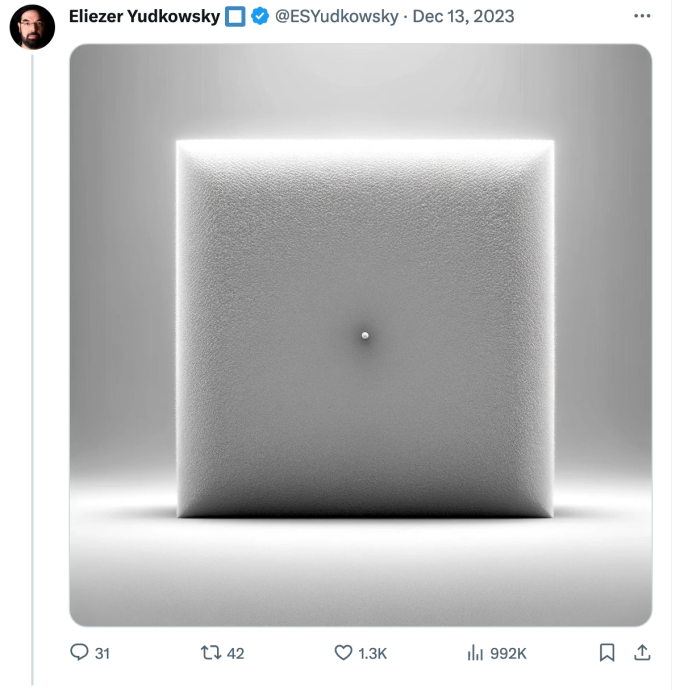
This experiment raises profound questions about AI, creativity, and our perception of the ordinary and the extraordinary.
The Challenge of Pushing Limits
As Yudkowsky and McCurrach found, pushing AI to its extremes sometimes means challenging its 'opinions.' When faced with resistance, both adopted a strategy of argumentation, coaxing the AI to delve deeper into their respective visions. This interaction underscores the dynamic nature of human-AI collaboration, where negotiation and persuasion play a role in the creative process.
This journey into the realm of AI-generated art is not just about the images themselves, but what they represent in the broader context of technology and creativity. The playful antics of a digitally altered goose or the profound simplicity of a normal scene challenge our preconceptions of art and the role of AI in its creation.
They prompt us to ask: What are the limits of AI-assisted creativity? Is there a boundary between the absurd and the ordinary that AI cannot cross?
So, What Do These Experiments Mean?
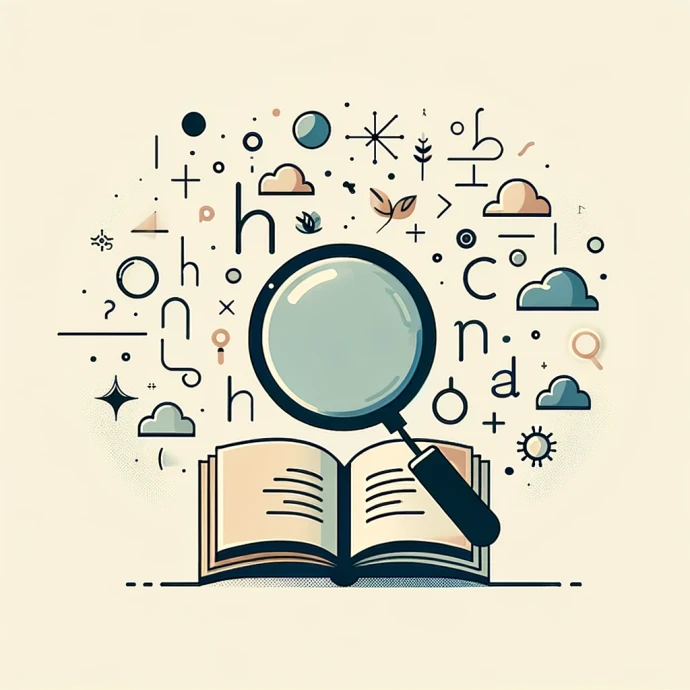
Yudkowsky's experiment with normalcy also raises ethical and philosophical questions about our relationship with AI. As he pushed ChatGPT to create increasingly 'normal' images, some commenters wondered if it was appropriate to demand so much from an AI, despite its lack of emotions or suffering. This dilemma speaks to our evolving understanding of AI and its capabilities. It highlights a need for a deeper examination of how we interact with and perceive these advanced technologies.
The experiments with ChatGPT and the resulting images – from the happiest puppies to the silliest geese – represent more than just a technological novelty. They are a window into the future of art, creativity, and machine intelligence. They show us that the boundary between what we consider real and imaginary is becoming increasingly fluid, shaped by the imaginative possibilities of AI.
As we stand at this crossroads, the journey of AI-assisted art is only beginning. The future holds endless possibilities for what can be imagined and created. From the mundane to the magnificent, the silly to the sublime, AI is redefining the canvas of our imagination, challenging us to reimagine the limits of what is possible.
In conclusion, the evolution of ChatGPT and its ability to generate images marks a significant milestone in the field of AI. It blurs the lines between human and machine creativity, opening up new avenues for artistic expression and exploration. As we continue to push the boundaries of what AI can achieve, we are not only witnessing the growth of technology but also participating in the expansion of our own creative horizons.

Become a part of digital history



Comments about Crazy Puppies and Silly Geese: Pushing the Limits of A.I. Absurdity